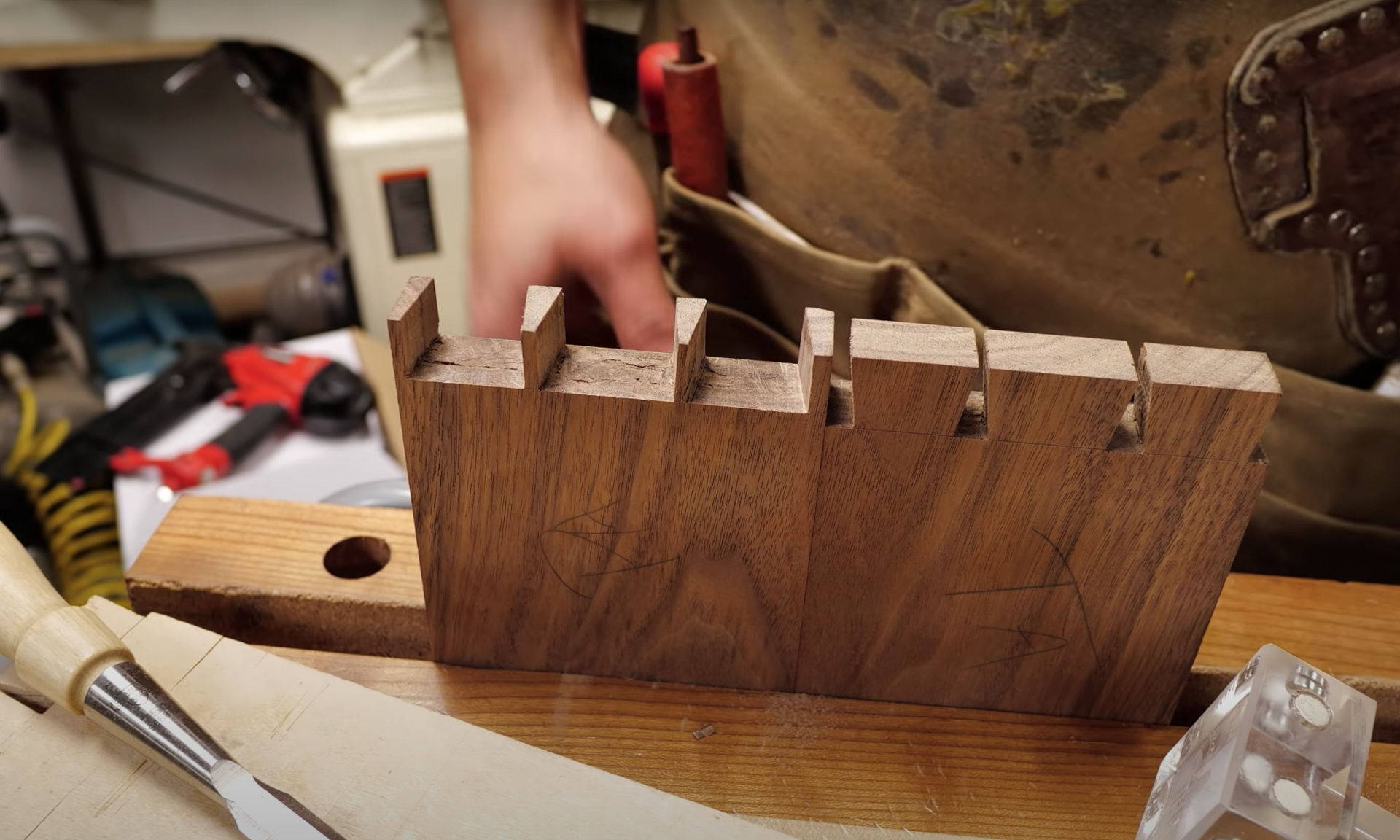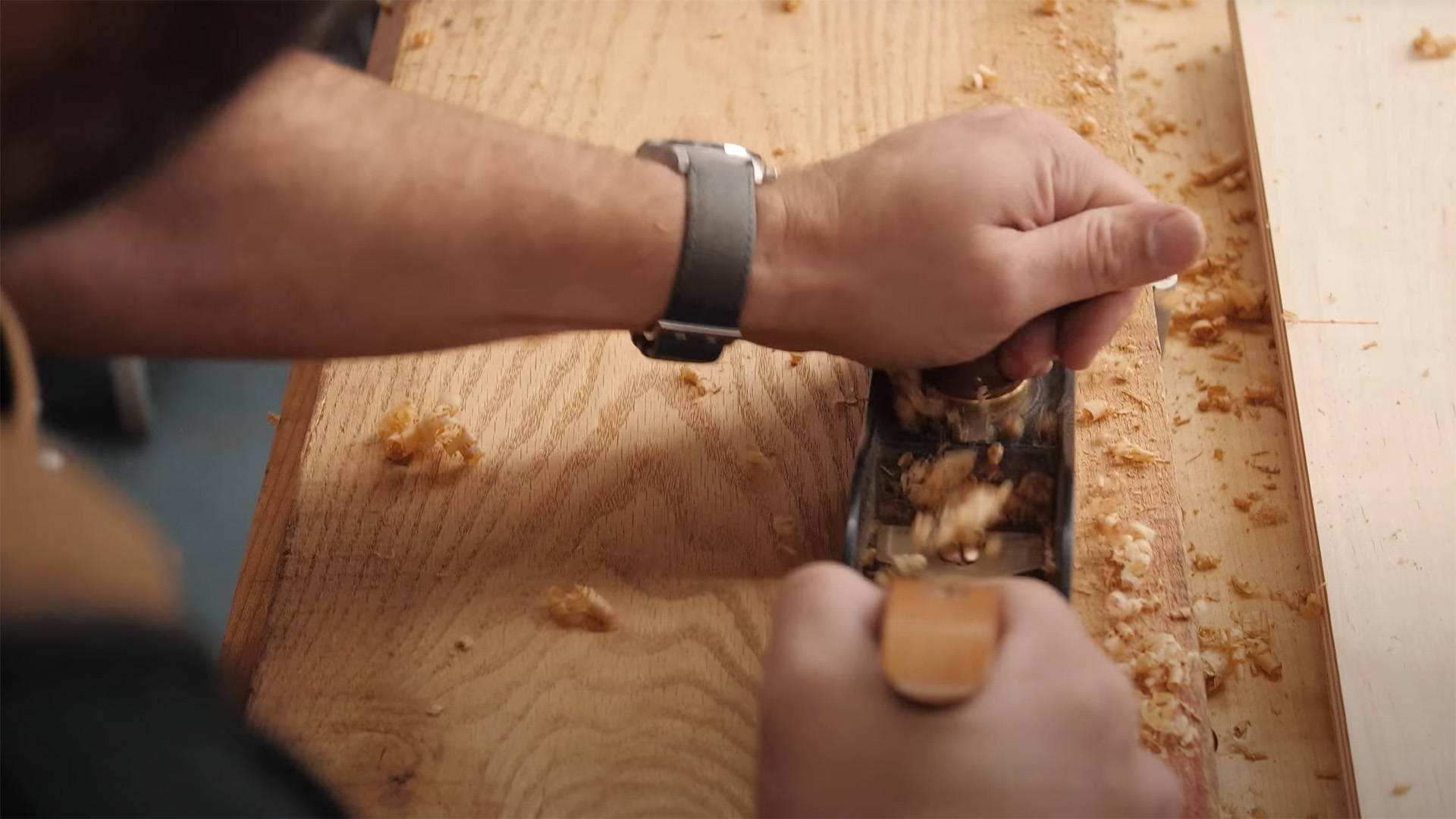When it comes to woodworking tools, I’m a big believer in “buy once, cry once” (I also believe every shop should have a dedicated crying corner).
But there are tools you’ll buy not once, not twice, but again and again.
These are what we call consumables — purchases you make knowing full well they’ll have to be replaced.
They include things like glue, tape, and finishes. But sandpaper, table saw blades, and router bits are all woodworking consumables as well.
And while these purchases are usually less expensive upfront, they’re a never-ending investment.
A new table saw can set you back a few grand. But that’s a fixed, one time cost. Sandpaper, on the other hand, is something most woodworkers will need to keep buying forever.
And that takes me to the thesis of this blog post:
The best way to save time and money in the shop — whether you’re a pro or hobbyist — is by investing in high-value consumables.
What exactly does that mean?
I’m going to explain it with a concrete real-world example, as well as give you a list of “value indicators” to look for in consumables like saw blades and router bits.
Knowing how to shop for value saves you lots of cash down the road — and also a ton of time (so you can get back to crying).
WHAT DOES HIGH-VALUE MEAN FOR CONSUMABLES?
It’s natural to make buying decisions based on retail price. And while that’s definitely part of a product's value, it’s not the whole story.
I think of “value” as a balance of three factors: Performance, longevity, and price.
Basically: How well does a product work, how long will it keep working at that level, and how much does it cost upfront.
Let’s use table saw blades as an example. Say you find one for $20 and another for $100 and go with the cheaper option.
$80 in your pocket, right? But it turns out, that $20 blade has zero carbide on the teeth. So when it gets dull — which can happen with a few cuts — it’s basically bunk.
And of course, it doesn’t have any heat protective coating. Your cuts get hot enough to make grandma blush and your boards look like they just came out of the air fryer.
You’ll end up having to replace that $20 blade again and again. And within a year, it’ll have already cost more than the higher-end blade.
The price seems right — but the performance and longevity don’t cut it.
But that $100 blade has enough carbide to be sharpened multiple times. And the heat protective coating keeps your cuts cool and burn-free — saving you clean up time later on.
Even though the retail price is higher, the more expensive blade is higher-value. It works well and keeps working well for years to come.
But how much of a difference can this really make? You might be surprised.
I’m going to give you an example with real numbers about a consumable you’ve probably never given much thought to…
So let me walk you through the “Great Sandpaper Test.”
CONCRETE EXAMPLE OF VALUE: THE SANDPAPER TEST
Last year, I did a MASSIVE test of 19 different sandpapers in head to head combat.
Most people probably don’t give sandpaper purchases much thought. You need some, so you go to your closest hardware store and pick up the cheapest available option.
But our sandpaper test proved that the difference in value doesn’t only save you time — it can actually save you a sizable amount of cash.
And sure, the money’s nice. But less time sanding?! We can all get behind that.
DETERMINING VALUE IN SANDPAPER
We first needed to figure out how to quantify value in sandpaper.
Like I said before, I see value as:
- How well a product works
- How long it keeps working at that level
- How much it costs.
For how well it works, we looked at the amount of material removed (in grams) after 25 minutes of sanding.
To test longevity, we broke those 25 minutes into 5 minute intervals and looked at the decline in material removed in each interval.
As a proxy for value, we divided the amount of material removed by the cost of a single sheet, giving us a variable for “price per gram of material removed.”
And let me tell you — the differences between brands were soap opera level dramatic.
HOW THE EXPERIMENT WORKED
This experiment tested 19 of the most popular sandpapers (many by viewer request).
We used 5 inch, 120 grit discs from each brand, and tested them all on a piece of red oak.
To make sure the experiment was fair, we flew out to ATI Industrial Automation in North Carolina, who kindly let us use a robotic random orbital sander capable of exerting an exact amount of pressure across an entire surface.
We set this pressure to 10.78 pounds — about the force you’d put on a random orbital sander while using it yourself.
Then we started the experiment.
Each disc was used to sand the red oak board five times in 5 minute intervals of continuous sanding.
We measured the weight of the board (in grams) before and after each interval to figure out how much material had been removed.
After repeating the experiment for every disc (it literally took four days), we plugged the data into the following equation:
Total material removed in grams / Cost per disc = Cost per gram of material removed
That variable gave us a tangible way to rank the value of each brand.
And if we learned anything, it’s that retail price alone is a terrible indicator of value.
THE RESULTS
We have all the results available for free in a downloadable pdf (you can get it here) — but let’s look at one example to illustrate.
Makita’s white aluminum oxide sandpaper only costs $0.50 per disc, while 3M’s Cubitron costs $0.84 per disc.
But after 25 minutes of continuous sanding, the Makita disc only removed 4 grams of material — while the 3M disc took off 74 grams in the same amount of time.
That means from a cost per grams removed basis, the Makita discs were $0.1254 while the 3M discs were $0.0114.
Doesn’t sound like a big difference?
To take off 200 grams of material, it would cost you just over $25 with the Makita discs — and $2.28 with the 3M discs.
Even though they’re 68% cheaper upfront, the Makita discs end up costing you almost 200% more down the line.
Can there be a clearer example of value than that?
And the good news is the highest value products aren’t even always the most expensive.
The winner of our sandpaper test (by a longshot) was the 3M Xtract mesh disc — which took off a whopping 114 grams of material and only costs $0.41 per disc.
That’s a cost per gram of material removed of $0.0036 — which means sanding 200 grams of material would cost a mere $0.72.
And besides monetary savings, these sandpapers also save time.
That’s a huge source of value — because the last thing I want to do is spend hours sanding.
HOW TO FIND HIGH-VALUE CONSUMABLES
Depending on the tool, there are different indicators of what will provide the most value.
Here’s a few tips on what to look out for when it’s time to restock.
WHAT TO LOOK FOR IN SANDPAPER
Based on our results from the experiment, these are what we found to be shared amongst the top performers:
- Ceramic-based composition: Most traditional sandpapers are made from aluminum oxide. But the newer ceramic-based formulas tended to perform better across the board.
- Mesh discs: Mirka had a patent on mesh-style discs for a long time, but it expired a few years back. Based on my experience, mesh discs seem to clog up less and work for longer (plus they’re great for dust collection).
We’re soon going to be carrying different sandpapers from 3M — so keep your eyes peeled!
WHAT TO LOOK FOR IN TABLE SAW AND MITER SAW BLADES
You can read more about table saw blades here — but these are the key features to look for:
- Carbide teeth: The more carbide, the longer a blade will last. It allows you to sharpen a blade multiple times and makes the teeth less prone to chipping. Blades with little to no carbide dull quickly — and once they do, they’re pretty much done.
- Laser cut: Laser cut blades are always higher quality. Compared to cheaper stamped steel blades, they’re flatter, stay flat at high speeds, and have better heat expansion lines.
- Heat protective coatings: As with any tool, heat is the enemy of sharpness. High-value blades come with heat protective coatings that actually work. It helps keep the teeth sharp for longer, and helps prevent burn marks in your cuts.
The CMT blades we carry are all laser cut, come with a proprietary heat protective coating, and have tons of carbide for years of sharpenings.
From thin to full kerf, crosscuts to dados, we’ve got every blade you’ll ever need.
WHAT TO LOOK FOR IN ROUTER BITS
- Spiral flute designs: Pound for pound, spiral bits are way higher value than traditional straight bits. They stay sharp longer, produce cleaner cuts, and are less prone to vibration. You can read more about spiral bits here.
- Heat protective coatings: Just like with table saw blades, heat protective coatings go a long way in extending the longevity of your bits. A cooler cut means the sharp edges stay sharp — and that can be the difference in a bit lasting a few months to over a year.
We partnered with BitsBits to release a line of Katz-Moses Tools Signature Router Bits.
They come with BitsBits’ specialty heat-resistant Astra-coating that can extend tool life by 2-4x, and we’ve got a selection of downcut, upcut, compression, spiral flush-trim, and profile bits.
TIP: USE IT RIGHT, KEEP IT CLEAN
The best way to extend the life of your bits and blades is simple:
Use them correctly and keep them clean.
That means you should take the smallest bites you can to keep things from heating up, and don’t push them past their limit.
Make sure to clean off any pitch (sap build up) with a good blade cleaner.
The CMT Blade Cleaner we carry makes it easy to clean off pitch and won’t damage the heat protective coatings (like Simple Green can).
VALUE ABOVE ALL ELSE
Moral of the story: Value should be your guiding light when buying consumables.
Whether it’s blades, bits, or just plain old sandpaper — shopping for longevity and performance is the best way to save money in the shop.
Our mission at Katz-Moses Tools is to provide the highest-value tools that make your time in the shop a success (and save you from constant runs to the home center).
Every tool we sell is what WE actually use in our own woodshops. And good news: There’s a lot more tools coming.
What other “tool tests” would you like to see us do? Let us know in the comments below!
Follow us on Instagram @katzmosestools, on TikTok @katzmoseswoodworking, and check out my YouTube channel for more great woodworking content...
And as always, STAY SAFE IN THE SHOP!










